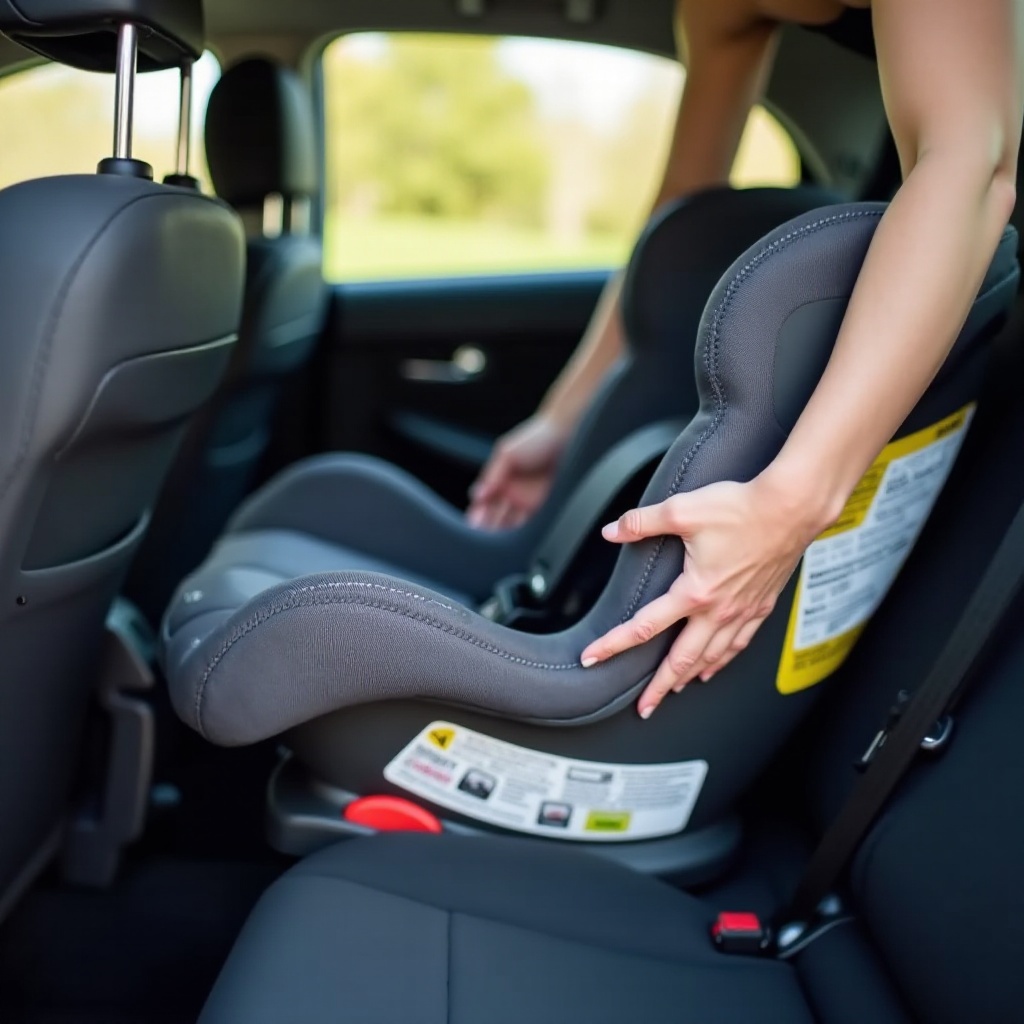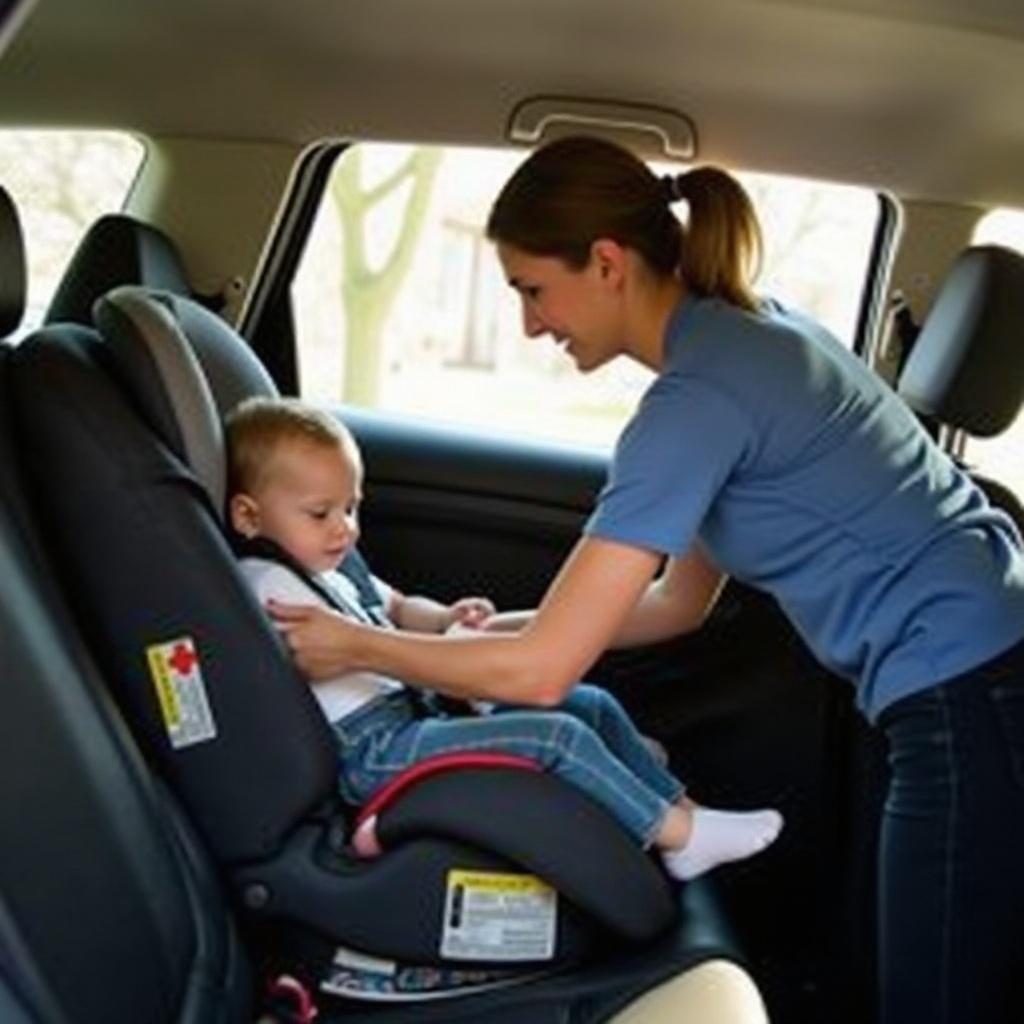Introduction
Ensuring the safety of your child while traveling in a car starts with proper car seat installation. A securely fitted car seat can significantly reduce the risk of injury in the event of an accident. This comprehensive guide will walk you through the key steps to ensure your child’s car seat is installed correctly and safely. We will cover the importance of car seat safety, how to choose the right car seat for your child, and provide a step-by-step installation guide. Additionally, we’ll discuss common installation mistakes, how to check your car seat after installation, and ongoing maintenance tips.

The Importance of Car Seat Safety
Car seat safety is paramount for protecting children during car travel. According to statistics, proper use of car seats can reduce the risk of fatal injury for infants by 71% and toddlers by 54%. This makes the correct installation and use of car seats crucial. Car seats are designed to provide secure positioning and absorb impact forces in the event of a collision, distributing these forces away from the child’s vulnerable areas.
Ensuring that a car seat is installed correctly is not only vital for maximizing its protective benefits but also a legal requirement in many regions. Incorrectly installed car seats can lead to severe consequences, including ejection from the seat during a crash. Therefore, understanding and implementing car seat safety measures is an essential responsibility for every parent and caregiver.
Choosing the Right Car Seat for Your Child
Selecting the correct car seat for your child is the first step in ensuring their safety. Various types of car seats are designed to accommodate children at different stages of development. Here’s how to choose the right one:
- Infant Car Seats: Suitable for newborns and babies up to 35 pounds. These seats are rear-facing and provide crucial head and neck support.
- Convertible Car Seats: These can be used both rear-facing and forward-facing and are designed to grow with your child. They are suitable for infants and toddlers.
- Booster Seats: For children who have outgrown their convertible seats but are not yet big enough to use the car’s seat belts alone. Generally used for children weighing 40 to 100 pounds.
Make sure to check the car seat’s specifications and expiration date. Always follow the manufacturer’s guidelines for weight and height limits to ensure the seat provides adequate protection for your child.
Step-by-Step Car Seat Installation Guide
Proper installation of a car seat is crucial for safety. Follow these detailed instructions to ensure your child’s car seat is securely installed.
Infant Car Seat Installation
- Position the car seat in the back seat of your vehicle, ensuring it is rear-facing.
- Secure the base using either the seat belt or the LATCH system.
- Check for tightness: The base should not move more than an inch side to side or front to back when pulled at the belt path.
- Attach the carrier to the base, making sure it clicks into place.
- Harness the child securely, ensuring the straps are snug and the chest clip is at armpit level.
Convertible Car Seat Installation
- Select rear-facing or forward-facing based on the child’s age and size.
- Position the car seat and use the appropriate belt path (rear-facing or forward-facing).
- Use the seat belt or LATCH system to fasten the car seat.
- Check for a snug fit: The seat should not move more than an inch in any direction.
- Adjust the harness: Ensure the straps are at or below the child’s shoulders (rear-facing) or at or above the shoulders (forward-facing).
Booster Seat Installation
- Position the booster seat in the vehicle’s back seat.
- Use the vehicle’s seat belt to secure the child in the booster seat.
- Ensure proper belt positioning: The lap belt should lie snugly across the upper thighs, and the shoulder belt should cross the chest and shoulder.
- Adjust the booster seat if needed to ensure the seat belt lies correctly.
Connecting with our next topic, it’s equally important to avoid typical installation errors for maximum safety benefits.
Avoiding Common Car Seat Installation Mistakes
Avoiding common mistakes during car seat installation can significantly enhance your child’s safety:
- Incorrect harness positioning: Ensure the harness straps are at the correct height and the chest clip is at armpit level.
- Loose installation: Double-check that the car seat does not move more than one inch in any direction.
- Premature transition: Do not move the child to the next car seat stage too early. Always adhere to the manufacturer’s weight and height guidelines.
Next, let’s ensure that once installed, the car seat remains firmly in place with thorough checks.
Checking Your Car Seat After Installation
After installing the car seat, perform a thorough check:
- Inspect the tightness: Ensure the seat is firmly secured and does not shift excessively.
- Harness check: The harness should be snug, with no slack in the straps.
- Position verification: Ensure the car seat is in the correct position relative to your child’s age and size.
Moving forward, maintaining the car seat through regular checks and cleaning will help ensure its longevity and safety.

Regular Maintenance and Safety Checks
Regularly scheduled maintenance ensures ongoing car seat safety:
- Periodic inspections: Check the seat installation and harness fit regularly, especially after long trips.
- Clean and care: Follow the manufacturer’s cleaning instructions to maintain the integrity of the seat.
- Updates and recalls: Register your car seat with the manufacturer to receive important safety updates and recall notices.

Conclusion
Securing a car seat correctly is essential for your child’s safety. From choosing the right seat to ensuring proper installation and regular checks, every step plays a vital role. By following this comprehensive guide, you can travel with peace of mind, knowing your child is protected on the road.
Frequently Asked Questions
What is the LATCH system and how do I use it?
The LATCH system (Lower Anchors and Tethers for Children) is designed to make car seat installation easier and more secure. It uses built-in anchors and tethers to attach the car seat directly to the vehicle’s seat. To use it, connect the seat’s lower anchor points to the car’s anchors, and tighten the straps to ensure a secure fit.
How do I know if my car seat is installed correctly?
Check the tightness of the installation by ensuring the seat does not move more than an inch side-to-side or front-to-back. Verify harness position and snugness, and consult the car seat manual to confirm all steps have been followed correctly.
How often should I check or adjust my child’s car seat?
Perform a quick check of your child’s car seat before each use, ensuring the harness is secure and the seat is tightly installed. Conduct a more thorough inspection monthly, or after any significant changes like moving the car seat or a long trip.
